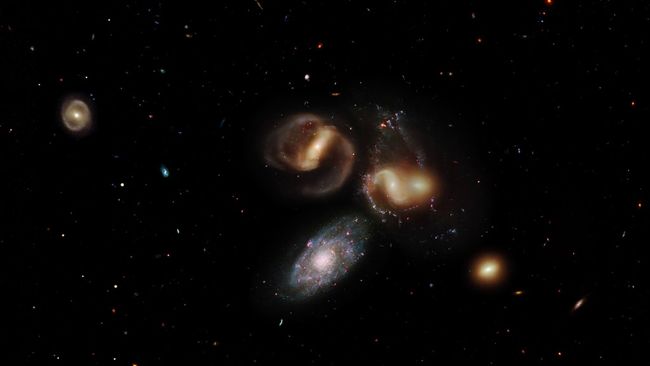Cooped Up at Home? You can Help Scientists Spot Penguins from Space or Seek Out new Galaxies.
By Meghan BartelsMarch 30, 2020 | There are at least two bright spots in these strange times: Telescopes are still studying distant galaxies and penguins are still pooping across Antarctica. In both cases, if you’re looking for new ways to pass the time while you stay home, you can help out scientists studying these phenomena.
Citizen science is nothing new, but it’s a particularly appealing option as the spreading coronavirus prompts containment measures around the world. So if you’d like to take your mind off current events for a while, consider chipping in on a research project.
“I think where we can tap into people’s enthusiasm through their computer, that kind of captures the zeitgeist of coronavirus: what can we do when we’re all trapped at home,” Heather Lynch, a statistical ecologist at Stony Brook University in New York, told Space.com.
Lynch is affiliated with two different citizen-science projects aimed at better understanding penguins, which, listen, we know are not in space. One of those projects, called Penguin Watch and accessible here, enlists people to identify the birds in photographs taken automatically near their colonies. But the other relies on satellite imagery to identify such colonies.
Penguins are so, hmm, productive, that biologists find the birds by combing through satellite imagery looking for swaths of their poop, which scientists call guano. “So we can map out how much area is covered in guano, and that gives us a really good estimate of how many penguins were actually at the colony at that particular location,” Lynch said.
Satellite imagery of the Danger Islands, where scientists discovered previously unknown Adelie penguin colonies. (Image credit: NASA)…
But if penguin poop, even penguin poop from space, doesn’t sound like your thing, here’s an alternative: check out some weird-looking galaxies. You can do that through another citizen-science project, called Galaxy Zoo.
The program has been around for more than a decade, enlisting volunteers to classify the shapes of galaxies. That’s the sort of task that anyone can do. “You don’t even need to know what a galaxy is,” Chris Lintott, an astrophysicist at the University of Oxford, told Space.com. And although the shape isn’t difficult to determine, it is valuable information to have.
“The shape of a galaxy tells you about its history: it tells you about when it accreted material, when it collided with other galaxies, when it formed stars and all sorts of other things,” Lintott said. “But astronomers are quite good at getting images of galaxies and less good at sorting through the data.” Hence, turning to the public. After a brief training session, volunteers are turned loose on the scientists’ supply of images.
“We don’t need people to spend hours contemplating a particular system unless they want to, just a guess and you get another galaxy,” Lintott said. “Many people describe it as a bit like eating a packet of chips. You take one, you take another, you take another, and you can surf your way through the universe that way.”
Galaxies come in a host of shapes, which can tell scientists about the history of these structures. (Image credit: NASA, ESA, and G. Bacon, J. DePasquale, F. Summers, and Z. Levay (STScI))And recently, the project instituted a new twist that ensures things stay interesting. Although the Galaxy Zoo project was born of the premise that humans were better at classifying galaxies than computers, 12 years has changed the game a bit. Now, the project has added an algorithm, which takes care of the galaxies that are easiest to classify and saves the stranger ones for participants.

